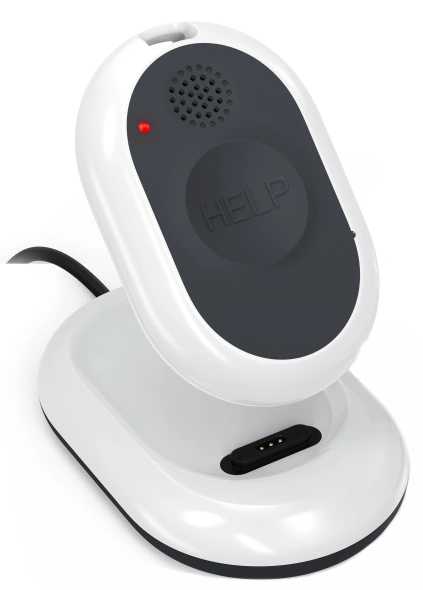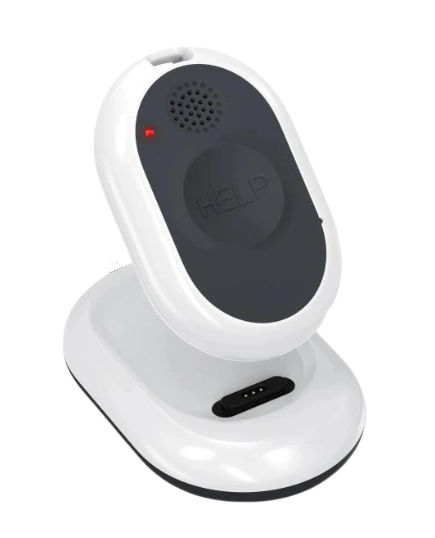What’s The Best Room Temperature For COPD Patients? Creating A Comfortable Home Environment
For seniors managing Chronic Obstructive Pulmonary Disease (COPD) in the USA, the right room temperature can significantly impact comfort and health. Seniors living with COPD often face unique challenges related to temperature sensitivity, which can exacerbate their symptoms. You must also consider other environmental factors such as humidity, air quality, and ventilation, which also make a significant difference in managing COPD symptoms. Addressing these factors helps create a living space that supports health and makes breathing more manageable.
Understanding COPD And Its Impact On Comfort
Chronic Obstructive Pulmonary Disease (COPD) is a lung condition that makes breathing difficult, often involving chronic bronchitis and emphysema. For seniors, managing COPD isn't just about medication; it's also about creating a home environment that eases breathing.
Environmental factors like temperature, humidity, and air quality all impact how well breathing can be maintained. Fluctuations in these can worsen breathing issues, so it's necessary to keep the home environment stable and supportive. Recognizing how these elements influence respiratory health allows seniors to make choices that lead to better living conditions and improved comfort.
Best Room Temperature For COPD Patients

For seniors with COPD, finding the right room temperature can make a big difference in comfort and breathing. Experts suggest keeping the thermostat between 68 and 72°F. This range helps prevent the air from being too cold, which can tighten airways and cause coughing, or too warm, which might lead to dehydration and discomfort.
Staying within this temperature range eases the burden on the lungs, reducing the risk of breathlessness. Cold air can make breathing harder, while excessive heat can worsen symptoms by drying out the airways. Temperatures outside this range can also increase the likelihood of respiratory infections. Cold conditions might spread viruses more easily, and hot environments can intensify the effects of allergens and pollutants. Maintaining a consistent indoor temperature within this range supports better breathing and greater daily comfort.
Additional Environmental Factors To Consider
Creating a comfortable home for seniors with COPD involves more than just adjusting the thermostat. Several other factors make a difference in respiratory health and overall comfort. Focusing on these details can help make daily life more manageable.
Humidity Levels
For those with COPD, keeping indoor humidity between 40 and 50% is recommended. High humidity can make the air feel heavy, complicating breathing and promoting mold and dust mites, which can trigger allergies or worsen symptoms. Conversely, low humidity can dry out airways, causing irritation and more coughing. Using a humidifier or dehumidifier can help maintain a comfortable balance, supporting easier breathing.
Air Quality
Clean air is requisite for managing COPD. Poor air quality can worsen symptoms and lead to further respiratory issues. Consider using air purifiers with HEPA filters to remove dust, pollen, and pet dander. It's also wise to avoid smoke from tobacco, fireplaces, or cooking, as it can severely impact lung health. Regularly changing HVAC filters and ensuring good ventilation can help maintain a healthy indoor environment. Certain plants can also be placed inside the home to eliminate toxins and keep the air pure, such as peace lilies, aloe vera, and golden pothos.
Ventilation
Proper ventilation ensures a fresh supply of oxygen-rich air and helps maintain good air quality. Stagnant air can lead to a buildup of pollutants and allergens, worsening COPD symptoms. To promote airflow, open windows when possible or use exhaust fans in kitchens and bathrooms to remove excess humidity and odors. Keeping air vents unblocked and clean also helps distribute fresh air throughout the home, making it more comfortable for seniors with COPD. Routine airflow through the home helps prevent stale, irritating indoor conditions.
Practical Tips For Maintaining The Ideal Environment

For seniors with COPD, creating a comfortable home involves a few key strategies to support respiratory health. By taking practical steps, seniors can better manage their environment, easing symptoms and improving well-being.
Temperature Control
Keeping the room temperature steady is ideal for everyone, but especially those with COPD. A programmable thermostat can help maintain the ideal range of 68 and 72°F by adjusting automatically throughout the day. In colder months, space heaters with safety features like automatic shut-off can provide extra warmth. During warmer periods, fans and air conditioning units can help keep the air cool and breathable.
Monitoring Devices
Devices that track temperature and humidity can be invaluable for seniors managing COPD. Digital thermometers and hygrometers offer real-time data, making it easier to adjust heating, cooling, or humidification systems. Many of these devices are designed with large displays and simple controls, ideal for seniors. Some smart home systems even allow remote monitoring via smartphones or tablets, adding convenience. These can be monitored by the individual or someone assisting them to maintain a stable environment.
Regular Maintenance
Regular maintenance of heating, ventilation, and air conditioning (HVAC) systems is necessary for ensuring they operate efficiently and support optimal air quality. Seniors should consider scheduling professional inspections at least once per year to identify and address any potential issues before they become major problems. These inspections can help ensure that all components are functioning properly, which can prevent unexpected breakdowns and maintain a comfortable home environment.
Regularly replacing air filters, typically every three months, is helpful for keeping the air clean and free from irritants that could exacerbate COPD symptoms. It’s also beneficial to check that all vents and ducts are unobstructed and clean, as this promotes better airflow throughout the home. Consistent maintenance supports better air quality and helps avoid sudden changes that may trigger symptoms.
Conclusion
For seniors with COPD, creating a comfortable home environment is necessary for better health and ease of breathing. Keeping the room temperature between 68 and 72°F can help manage symptoms and lower the risk of respiratory issues. Paying attention to humidity, air quality, and ventilation further enhances the living space, promoting overall well-being.
Simple actions like setting up automated temperature systems, using air monitors, and cleaning air systems regularly contribute to respiratory comfort. With these efforts, the home becomes a more manageable space for daily living with COPD.























